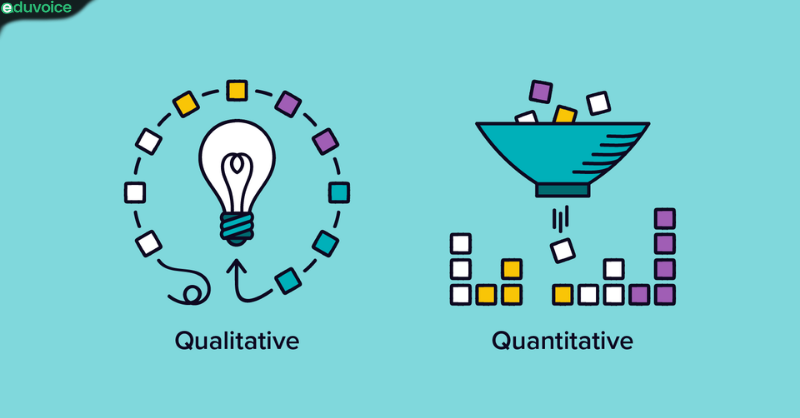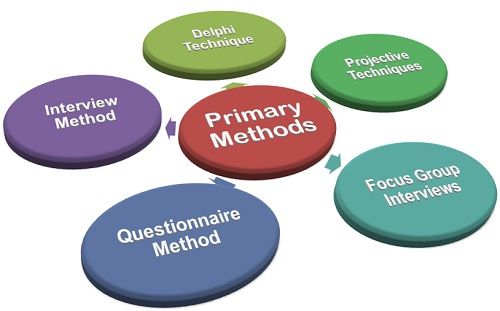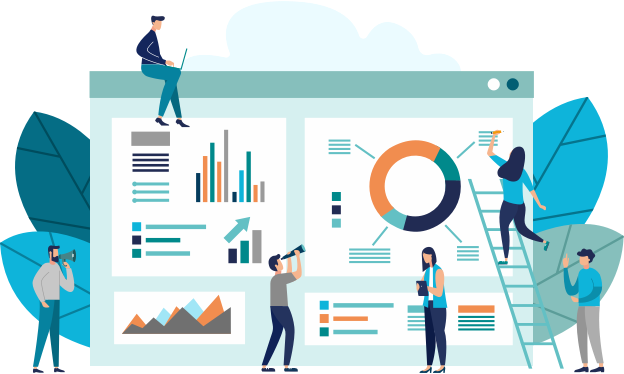Guide to collecting Data.
 Mary Tosin OLADELE
Mary Tosin OLADELE
You remember when we were younger and our computer class teacher asked us, "What is data?" We all shouted back, "Data is a raw fact!" Back then, it might have seemed like just another lesson, but now we know that data is all around us. Data comes in many forms, it is built from what we can see, think, feel, and even beyond. From the temperature outside to the social media posts we scroll through. Everything generates data. However, whatever we do with this data determines the information or value we get from it.
Effective data analysis begins with collecting quality raw facts. One of the main aims of data analysis is to collect and transform even the most jumbled set of information into an organized clear concept which brings us to the topic of data collection.
In this guide to collecting data, we will explore the various methods and tools for collecting data effectively, the techniques used in the process, and explore the steps involved in collecting quality raw facts. We will also delve into the different data collection methods, including surveys, interviews, observation, and existing databases. By the end of this article, you should have gained a comprehensive understanding of the key principles and practices for collecting high-quality data that can provide valuable insights and help you make informed decisions.
What is Data Collection?
Data collection is like picking apples from a tree. what does this tell you? except instead of apples, you're gathering facts and figures! Now let's define data collection by the book, it is the process of systematically gathering and measuring information from various sources for research, analysis, or decision-making purposes. Just like how you carefully choose the best apples to make a delicious pie, data collection involves not only gathering data but also evaluating and verifying its quality, relevance, and accuracy to ensure that it provides valuable and actionable insights to make informed decisions.

Image source - Methodology (mbrainingevolution.it)
Well, let me tell you about the two types of data:
Quantitative data: This is the kind of data that deals with numbers and can be measured. Think about test scores, weight, height, or the number of hours worked. This type of data is collected through surveys or experiments, and it helps us identify patterns and trends.
Qualitative data: The Qualitative type of data is all about descriptions, opinions, and observations. You know, like how you feel about your job or your favorite movie. This type of data is usually collected through interviews or focus groups, and it helps us understand the "why" behind certain behaviors or attitudes.
So, whether you're a numbers person or a people person, there's a type of data collection method that's right for you.
Well, it's important to note that the type of data you choose to work with depends on the problem you're trying to solve. If you need to measure something like the effectiveness of a new drug, then quantitative data would be the way to go.
On the other hand, if you're trying to understand people's experiences and perspectives, then qualitative data would be more appropriate.
Using both data types together can provide a more comprehensive understanding of the problem at hand For instance, if you're studying the impact of a new education program, you could use quantitative data to measure test scores, attendance rates, and graduation rates, while also using qualitative data to gather feedback from students, teachers, and parents about their experiences with the program. The decision on which data type to use is not based on personal preference, but rather on the research question you want to answer. And sometimes, combining both quantitative and qualitative data can provide a more complete picture and deeper insights.
Why is Data Collection Important?
Image source - Universal JVM GC analyzer - Java Garbage collection log analysis made easy (gceasy.io)
Are you ready to dive into the fascinating world of data collection and its incredible importance? Buckle up, because I am about to embark with you on a journey that will show you just how crucial data collection is in today's world.
From companies of various sizes, ranging from large multinational corporations to small businesses and government agencies to nonprofit organizations, data collection is a vital part of decision-making processes across all sectors.
Collecting and analyzing data can help organizations identify trends, detect problems, and ultimately make informed decisions that can lead to improved outcomes. So let's explore the amazing importance of data collection and how it can transform the way we make decisions.
Data collection is important in making informed business decisions: Imagine a big company that wants to sell its products in a new country. But first, they need to know more about the people living there, how much money they make, what they like to buy, and the laws they have to follow. all they have to do is to collect all that data. This helps the company make smart choices about how much to charge for their products, where to sell them, and how to tell people about them. By getting this information, the company can lower the chance of making mistakes and increase their chances of doing well in the new place. This is an example of the importance of data collection in making informed business decisions, specifically in market research and expansion. By gathering and analyzing relevant data, the company can make informed decisions that minimize risks and maximize success.
Similarly, small businesses can benefit from data collection as well. For example, a small bakery owner can collect data on customer preferences, and supply costs to make informed decisions on what products to offer, pricing, and sales data to see which products are selling well and which ones are not. By analyzing this data, the owner can optimize their business operations, improve customer satisfaction, and increase profitability.
Whether you're a business owner, Or perhaps you're a researcher studying the impact of climate change on a particular region. By collecting and analyzing data on temperature, rainfall, and other environmental factors, you can gain a more comprehensive understanding of how climate change is affecting the area and make recommendations for mitigation and adaptation strategies. or just someone trying to make sense of the world around you, data collection can provide invaluable insights that help you achieve your goals and make informed choices.
In short, data collection is a powerful tool that helps us make better decisions and solve problems more effectively. So the next time you find yourself facing a tough decision or trying to solve a complex problem, remember the importance of collecting high-quality data, it could be the key to unlocking the insights you need to succeed!
Popular Data Collection Methods
Before we dive into the various methods used for collecting data, it's essential to consider where the data comes from. There are two main types of data sources, they are primary data and secondary data. In the next section, we'll talk about the most popular ways to collect data from these sources.
To start a research project, answer a business question, or solve a data-related problem, it is important to think about where you can get your data from.
Primary data collection

Image source - Primary-data-collection-methods.jpg (500×311) (businessjargons.com)
Primary data collection is the process of gathering new and original data directly from the source. it is like being a detective on a case, gathering brand new evidence straight from the scene of the crime. Just like how a detective might collect fingerprints or interview witnesses to solve a case, primary data collection involves obtaining fresh data straight from the source.
There are several methods of collecting primary data such as conducting,
Surveys: This method involves collecting data by asking a set of structured questions to a group of people, either through written questionnaires or online surveys. Surveys are like conducting interrogations with suspects and carefully selecting and gathering the information you need from a group of people.
Interviews: This method involves having one-on-one conversations with individuals to gather in-depth information about their opinions and experiences. Interviews are like conducting in-depth interrogations with witnesses to gain a deeper understanding of their experiences and opinions. Interviews can be conducted in person, through phone calls, or via video calls.
Observations: Observations are like being a keen observer, carefully examining the environment to understand behavior and patterns. This method involves systematically watching and recording behaviors in a natural setting to gather information. Observations can be used to collect data on human behavior, and physical or environmental phenomena.
Just as fresh evidence can be more valuable in solving a case, primary data collection can provide accurate and specific information that addresses the research question at hand. By using primary data collection methods, you can uncover valuable insights and solve complex research questions. This is a great way to get accurate and specific data that helps you answer your questions.
Secondary data collection
Secondary data is a type of data that's already been collected by someone else for another purpose. As a data analyst, secondary data is like finding a hidden treasure trove of information that has already been collected and organized by someone else. It is a valuable resource that can provide a wealth of information on a wide range of topics and is readily available for analysis.
Secondary data can come from a variety of sources such as government records, academic publications, market research reports, and industry publications. These sources of data can be used to gain insights and inform decision-making.
The benefits of using secondary data are numerous.
it is cost-effective: this is because it saves time and resources compared to primary data collection.
it can provide a broader scope of information: because it has already been collected over some time, it provides historical context and background information. Think of it like exploring a new city with a map and it can be easily accessed and used by researchers in any part of the world.
However, there are some limitations to using secondary data. One of the limitations is that the data may not be as relevant to the research question as primary data would be. Secondly, the data may be outdated or incomplete, which can affect the accuracy of the results. Thirdly, the data may not be available for free.
In conclusion, as a data analyst, it is important to consider using secondary data as it can provide valuable insights into a research question. However, it is also important to consider the limitations and potential biases of the data source and ensure that it is appropriate for the research question at hand. By carefully considering both the benefits and limitations of secondary data, data analysts can make informed decisions that can ultimately lead to more accurate and insightful analysis.
Now that we've looked into the two sources of data, it is important to know that choosing the right data source is important and depends on things like what you're researching, what data you need, and what resources you have.
Steps to Take to Collect Your Data
Whether you're an experienced analyst or a curious beginner, collecting data is a crucial part of any data project. Here are some steps to guide you through the process:
Define your research question: As a data analyst, your success depends on your ability to define the problem you want to solve or the questions you want to answer through your analysis. what is your goal for the project? What do you want to learn or understand from your data? what questions do you need answers to? For example,
Why do customers stop buying, and how can we keep them coming back?
Where should we focus our advertising to get the most customers?
What products do people like in different parts of the world?
When do people buy certain products, and how much do they pay for them?
How do people's age, gender, and income affect what they buy?
The data source for these research questions would depend on the specific company and industry being analyzed. In general, the data sources could include customer surveys, sales and transaction data, website analytics, social media data, and demographic data.
Having a clear research question will guide you in selecting the right data sources and collection methods. This step is crucial because it guides you in selecting the appropriate data sources and collection methods that will provide relevant information for your analysis.
determine where your data is coming from: To collect data effectively, you need to identify your data sources. Data sources refer to the origin of your data, which can come from primary or secondary sources. Identifying your data sources is important because it helps you to determine the appropriate data collection methods to use. For example, if your data sources are primarily from primary sources, you may choose to conduct surveys or interviews to collect the data. If your data sources are from secondary sources, you may need to access relevant databases to gather the necessary information.
Collecting the data: After identifying your research question and the type of data you need, the next step is to collect the data using reliable and comprehensive methods.
Now that you've collected your data, you're ready to analyze your data by taking it through the other stages in the data analysis process.
Data Collection Tools and Techniques
Surveys - Surveys can be conducted using paper-based questionnaires, online tools like SurveyMonkey or Google Forms, or telephone interviews. Surveys are a popular method for collecting quantitative or qualitative data from a large number of people.
Interviews: If you're conducting physical interviews, you can use voice recorders, note-taking apps, pen, and paper, or video recording to collect data.
Social media monitoring tools: These tools allow you to collect data from social media platforms, such as Twitter, Facebook, and Instagram. Examples of social media monitoring tools include Hootsuite Insights, Brandwatch, Sprout Social, Mention, and Talkwalker. They help track brand mentions, customer sentiment, and industry trends.
Observations: observation is a fantastic data collection technique! It allows us to gather information about our environment and the people around us by simply paying attention and taking note of what we see.
Search engines - Government agencies often publish reports and statistics on topics such as demographics, economics, and public health. with search engines like Google, Bing, and others, you can find these relevant pieces of information on the internet.
Data collection is an incredibly important process that helps us better understand the world around us. By gathering information and analyzing it, we can identify patterns and trends, make informed decisions, and improve our products and services. From surveys and interviews to observations and web analytics, there are many methods for collecting data, and each one can provide valuable insights. So let's embrace the power of data collection and use it to drive positive change in our businesses, organizations, and communities. After all, the more we know, the more we can do to make the world a better place.
Subscribe to my newsletter
Read articles from Mary Tosin OLADELE directly inside your inbox. Subscribe to the newsletter, and don't miss out.
Written by

Mary Tosin OLADELE
Mary Tosin OLADELE
Hello there! My name is Oladele Mary Tosin, and I'm currently a 400L computer science student at Obafemi Awolowo University. I'm incredibly passionate about all things data, and I find great joy in analyzing data and telling its story. While I'm still honing my data skills, I'm excited about the journey and the endless possibilities that lie ahead.

